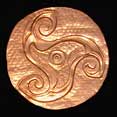
|
|

|
![]()

text translation service for many worldwide languages
“Writers of good antiquity and able judgement have been persuaded that even the School of Pythagoras and the Persian wisdom took their beginning from the old Philosophy of Britain.”
MILTON, THE BARD
The Morien Institute was conceived in early 1996 by John Michael, and officially came into being with the first sunrise following Alban Arthan – the Winter Solstice – that year. It is a not-for-profit research and education ‘network’ that is run by people with a range of disabilities, and which organises accessible activities in archaeology and astronomy for people with disabilities who would otherwise not be able to persue their interests – though able-bodied people are also welcome.
We organise accessible ‘Star Parties’ – where we watch meteor showers, solar and lunar eclipses, and teach participants the locations and names of constellations and planets and observe comets with telescopes as well as naked-eye-visible celestial phenomena. Occasionally, we organise accessible archaeological expeditions, often to observe live-sky events at ancient sites, and we share the results of our researches on our website.
The Morien Institute developed as a natural progression of the growing interest over the past 30 years or more in the many mysteries of the ancient world in general, and the growing appreciation of the highly sophisticated natural science practiced and taught by the ancient Druids in particular.
Taking initial inspiration from the writings of Owen ‘Morien’ Morgan, and the pioneering approach he used to decipher the astronomical data he found encoded in many Welsh oral traditions, The Morien Institute Network has been developed by John Michael with the help and advice of friends and research associates in many parts of the world.
Born in the Rhondda (Fawr) Valley, South Wales, in 1836, Owen ‘Morien’ Morgan became intrigued by these oral traditions which he gathered and studied, comparing them to similar traditions from many other cultures around the world. A journalist with the Cardiff-based “Western Mail” newspaper, he wrote from 1870 until his death in 1921 about the traditions of Druidism, the remnants of which he found in the folklore of the South Wales valleys and beyond.
The Morien Institute Founder and Research Director, John Michael, was also born in The Rhondda Valley. So it was easy for him to understand and confirm the accuracy of the geographical locations that Owen ‘Morien’ Morgan referred to, and by observations over many years to further confirm the risings and settings of the sun and the seasonally-descriptive placenames which marked those locations. The more he checked out the phenomena the clearer became the reality of the “Druid Library” that had been written in the landscape with reference to annual events which occurred in the skies.
As with many ancient peoples the Druids were renowned for their knowledge of the movements of the stars, and several classical writers referred to their teaching of natural philosophy and astronomy in their open-air universities and hedge schools. At that time the Druids controlled all of the islands of Prydain (ancient Britain), and had great influence throughout the classical world. Many of the inhabitants of the islands of Prydain at that time were likely the direct descendents of the megalith builders whose stone circles were laid out using complex geometry that was later attributed to Pythagoras.
The main focus of The Morien Institute has been the building of an Ancient Mysteries Archive – an online information resource, providing links to, and accounts of, the activities of the many organisations and individuals that either have been or are currently engaged in studying the pre-occupation that ancient peoples had with the skies.
There are simply too many archaeological anomalies which don’t fit in with the currently prevailing ‘gradualist’ paradigm that passes for our present misunderstanding of prehistory, and the recent moves towards an ‘interdisiciplinary’ approach to the study of the ancient world offers a most welcome potential for progress.
Open-minded research is increasingly showing evidence of sophisticated skywatching by ancient peoples several millennia before it appears to have deteriorated into a fragmented mish-mash of superstitious religious practices centred on appeasing the various ‘sky gods’ of the ancient world. What caused this decline is a matter of contention within the historical sciences generally, but the recent trend towards the re-evaluation of astro-mythologies is proving their true worth as an archive of oral tradition within which the accurate observations of ancient skywatchers has been recorded, and in many cases encoded by so-called astronomer-priests for access only by their initiated elites at a much later stage.
The Morien Institute researchers take the simple view that the inhabitants of modern industrialised societies spend so little time outside in the open air, especially at night, that they rarely consider the visible universe as part of their greater environment. Even today, tribal peoples of most non-industrialised societies regard the night sky with the same awe as did those in ancient times. They see the cycles of the sun, moon, planets and stars and regard them as a normal part of their environment. One which they can see with their own eyes to extend beyond the circle of the horizon out into the plane of the ecliptic, the apparent path of the sun through the background of stars we call today The Zodiac.
Therefore, The Morien Institute news headlines pages focus on new discoveries in all areas of archaeology, palaeotology, and astronomy in prehistory that are promoted as ‘pushing back the timelines’ of this discipline or that.
|
|
2019 Skywatching Calendar |
News & New Discoveries |
Marine Archaeology News 2019 |
Astro-Archaeology News 2019
The Morien Institute